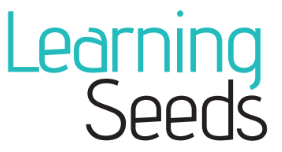
Experiencing Engagement
Children who explore comfortably play in proximity to peers. They do not bolt from the environment. They go from manipulating a variety of objects and materials to planning, pretending, and using objects to act out complex ideas.
Imagine a classroom where engagement problems are solved.
Children who interact share reactions and exchange expressions with peers. They follow norms like singing with the group. They respond to bids for attention and have basic conversations. They correctly seek help, and say “no” verbally rather than physically.
Children who share thinking can take the perspective of others. They tolerate and enjoy pretending with objects and roles. They can think about the past and present to plan for the future. They have a sense of self-identity, and can also identify with the group.
Learning Seeds offers a comprehensive range of strategies and best practices from our own transformative work with children to help you solve engagement for every individual in your group.
Sesame Workshop hosted a webinar featuring Erica Key, Founder and CLO of Learning Seeds and the LS education team. TEACHERS RECEIVE A FREE Sesame Certificate of Completion for this one-hour professional development webinar.
School Leaders — Learn how we apply our Engagement Lens in our work with children. Reach out to learn how we can coach your staff with on-site modeling and community of practice cohorts so that everyone in your group can engage!
The Milestones of Engagement
To set engagement goals and track a child’s progress, the Learning Seeds Enlightened Shadow team uses our Milestones of Engagement framework, consisting of seven major experiential categories that emerged from our own examination of our daily practice with children.






